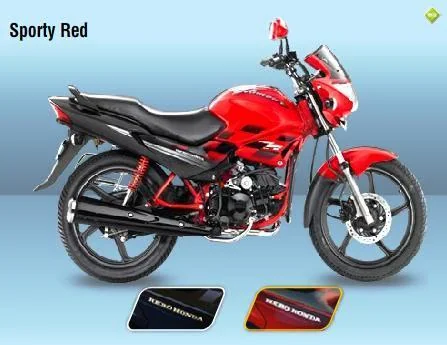2011
Hero Honda Glamour 125 PGM-FI - Specifications & Review

Article Complete Info
| Articleid | 154909 |
|---|---|
| Category | Sport |
| Make | Hero Honda |
| Model | Glamour 125 PGM-FI |
| Year | 2011 |
Chassis, Suspension, Brakes & Wheels
| Frametype | Tubular double cradle |
|---|---|
| Frontbrakes | Single disc. Optional drum break |
| Frontbrakesdiameter | 240 mm (9.4 inches) |
| Frontsuspension | Telescopic hydraulic fork |
| Fronttyre | 2.75-18 |
| Rearbrakes | Expanding brake (drum brake) |
| Rearbrakesdiameter | 130 mm (5.1 inches) |
| Rearsuspension | Swing Arm with Hydraulic Shock Absorbers |
| Reartyre | 3.00-18 |
| Wheels | Alloy wheel |
Engine & Transmission
| Borexstroke | 52.4 x 57.8 mm (2.1 x 2.3 inches) |
|---|---|
| Clutch | Multiplate, wet |
| Compression | 9.2:1 |
| Coolingsystem | Air |
| Displacement | 124.50 ccm (7.60 cubic inches) |
| Driveline | Constant mesh |
| Enginedetails | Single cylinder, four-stroke |
| Fuelsystem | Injection. Programmed electronic fuel injection |
| Gearbox | 4-speed |
| Ignition | FTI - Fully transistorized ignition |
| Power | 9.00 HP (6.6 kW)) @ 7000 RPM |
| Torque | 10.35 Nm (1.1 kgf-m or 7.6 ft.lbs) @ 4000 RPM |
| Transmissiontypefinaldrive | Chain |
Other Specifications
| Coloroptions | Red, black |
|---|---|
| Comments | Bike made in India. Version with electric start adds 4 kg to the total weight. |
| Electrical | 2.5 Ah battery for kick start and 5 Ah for self start. |
| Light | 35W/35W headlight |
| Starter | Electric & kick |
Physical Measures & Capacities
| Frontpercentageofweight | 141 |
|---|---|
| Fuelcapacity | 13.60 litres (3.59 gallons) |
| Groundclearance | 150 mm (5.9 inches) |
| Overalllength | 2,005 mm (78.9 inches) |
| Overallwidth | 735 mm (28.9 inches) |
| Reservefuelcapacity | 1.00 litres (0.26 gallons) |
| Weightincloilgasetc | 125.0 kg (275.6 pounds) |
About Hero Honda
Country of Origin:
India
Founder:
Joint venture between Hero Group (Brijmohan Lall Munjal) and Honda Motor Co.
Best Known For:
Ultra-reliable, fuel-efficient commuters (Splendor/Passion/CD Dawn) that defined India’s 100–150cc class
Company History
Launched in 1984, Hero Honda fused Honda’s engineering discipline with Hero Group’s manufacturing and distribution muscle to build the motorcycles that put modern India on two wheels. The formula was elegant: air-cooled singles tuned for economy and longevity, framed by rugged cycle parts adapted to rough roads and heavy use. The Splendor family became a household name—easy starts, 60–80 km/l economy in real hands, and service centers in small towns where a day without transport meant lost income. Rather than chase displacement, the JV refined the commuter: better carburation then PGM-FI, corrosion-aware finishes for monsoons, and spares priced so repairs never sidelined a family budget. Advertising emphasized trust, but the brand equity was earned by uptime and resale value. By the late 2000s, Hero Honda was the world’s largest two-wheeler maker by volume. After the 2011 split, Hero MotoCorp continued with indigenous R&D while Honda deepened its own India presence, but the JV years remain a case study in industrial partnership at scale. Historically, Hero Honda normalized the expectation that a motorcycle should run for years with basic care, seeding a mechanic culture and mobility patterns that lifted productivity for tens of millions.
